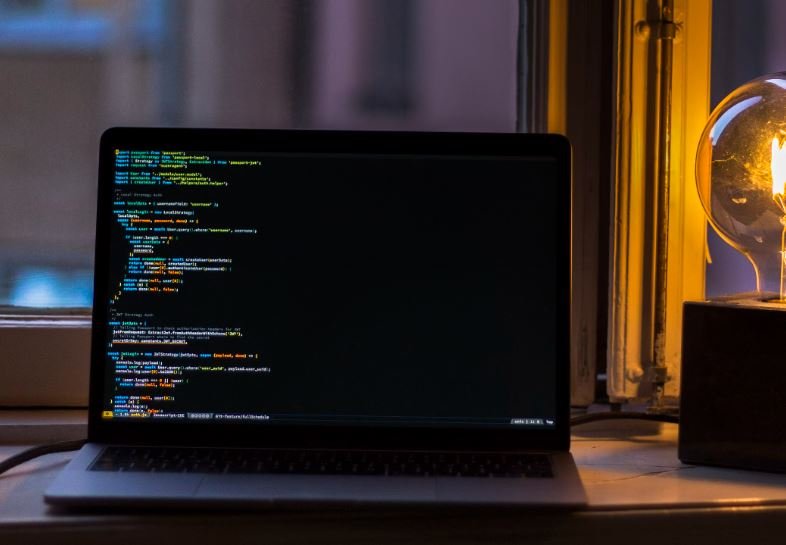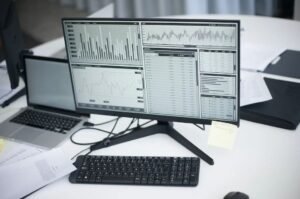Video Analytics
Video analytics is an emerging technology that uses algorithms and advanced data analysis techniques to extract meaningful information from video content. By analyzing various aspects of videos such as motion, objects, and audio, video analytics can provide valuable insights for different industries and applications. From security surveillance to marketing, video analytics has the potential to revolutionize the way we analyze and utilize video data.
Key Takeaways:
- Video analytics is a technology that extracts valuable information from video content using advanced data analysis techniques.
- It can be applied to various industries and applications, including security surveillance, marketing, and customer behavior analysis.
- The use of video analytics can improve operational efficiency, enhance security measures, and optimize marketing strategies.
- It relies on algorithms and advanced data analysis techniques to analyze motion, objects, and audio within videos.
Video analytics offers numerous benefits for businesses and organizations across different sectors. By leveraging the power of machine learning and computer vision, video analytics can automate and streamline processes that were previously manual and time-consuming. In addition, it can provide real-time insights and actionable intelligence, enabling proactive decision-making.
*One interesting aspect of video analytics is its ability to detect and track objects in videos. By employing object detection algorithms, video analytics systems can identify and trace specific objects of interest, such as vehicles, people, or specific types of products.*
When it comes to security surveillance, video analytics can revolutionize the way we monitor and protect our assets. Traditional surveillance systems rely on manual monitoring, which can be prone to human error and fatigue. Video analytics, on the other hand, can automate the monitoring process by using algorithms to analyze video feeds and alert security personnel in real-time.
*An interesting application of video analytics in security is the ability to detect suspicious behavior or events by analyzing specific patterns of motion, such as loitering or sudden movements.*
The Benefits of Video Analytics
By employing video analytics, businesses can unlock the potential of their video data and gain insights that were previously inaccessible. Here are some of the key benefits that video analytics can provide:
- Improved Operational Efficiency: Video analytics can automate manual tasks and processes, leading to increased operational efficiency and cost savings.
- Enhanced Security Measures: Video analytics can help identify and mitigate security threats by detecting suspicious behavior and providing real-time alerts.
- Optimized Marketing Strategies: By analyzing customer behavior in video feeds, video analytics can help businesses tailor their marketing strategies and improve customer engagement.
- Advanced Forensics and Investigations: Video analytics can assist law enforcement agencies in analyzing video evidence and solving crimes by detecting faces, license plates, and other critical details.
When implementing video analytics, it is important to choose the right technology and solution for your specific needs. There are various factors to consider, such as the complexity of your video data, the level of accuracy required, and the scalability of the solution. Consulting with experts in the field can help you make informed decisions and ensure a successful implementation.
Video Analytics in Action
To illustrate the potential of video analytics, let’s take a look at three real-world examples:
| Industry | Application | Data Collected |
|---|---|---|
| Retail | Foot Traffic Analysis | Customer count, dwell time, heat maps |
| Manufacturing | Quality Control | Defect detection, production line analysis |
| Transportation | Traffic Monitoring | Vehicle count, congestion analysis |
*These examples demonstrate the versatility of video analytics and its potential to provide valuable insights in different fields. From retail to manufacturing to transportation, video analytics can help businesses optimize their operations and improve decision-making processes.*
Overcoming Challenges
While video analytics offers numerous benefits, it also comes with its own set of challenges. Some common challenges include:
- Processing Power: Analyzing large volumes of video data requires significant processing power and storage capacity.
- Privacy and Compliance: With video analytics, privacy concerns may arise, and it is important to ensure compliance with data protection regulations.
- Accuracy and False Alarms: Achieving high accuracy in object detection and minimizing false alarms can be a challenge due to varying environmental conditions and complex scenes.
| Solution | Description |
|---|---|
| Motion Detection | Alerts security personnel when motion is detected in certain areas of surveillance. |
| Object Tracking | Tracks and traces specific objects of interest within a video, providing valuable data for analysis. |
| Facial Recognition | Identifies individuals’ faces in video footage for security, access control, and investigations. |
Despite these challenges, the potential of video analytics to transform industries and improve decision-making processes cannot be ignored. With advancements in technology and ongoing research, video analytics is set to play a crucial role in the future of data analysis and insights generation.
As video analytics continues to evolve and mature, businesses and organizations should stay up-to-date with the latest advancements in the field and explore how they can leverage this technology to gain a competitive edge.
By harnessing the power of video data, organizations can unlock a wealth of information and process it into actionable insights. Whether it’s enhancing security measures, optimizing marketing strategies, or improving operational efficiency, video analytics has the potential to revolutionize the way we analyze and utilize video content.

Common Misconceptions
1. Video Analytics is only used for surveillance purposes
One common misconception about video analytics is that it is solely used for surveillance purposes. While video analytics does play a crucial role in enhancing security and monitoring activities, its applications go beyond just surveillance.
- Video analytics can be used for crowd monitoring and management during events
- It can help retailers understand customer behavior and improve store layouts
- Video analytics can assist in optimizing traffic management and transportation systems
2. Video Analytics is too expensive and complicated to implement
Another misconception is that video analytics are costly and difficult to implement. While advanced video analytics solutions may require an initial investment, there are also more affordable options available. Additionally, modern video analytics software is designed to be user-friendly and can be easily integrated into existing surveillance systems.
- Cloud-based video analytics solutions offer a more cost-effective alternative
- Many video analytics systems now include user-friendly interfaces and intuitive dashboards
- Some video analytics vendors offer support and training to simplify implementation
3. Video Analytics invades privacy and is unethical
There is a misconception that video analytics technology is invasive and unethical due to its potential to infringe on people’s privacy. While it is crucial to address privacy concerns and ensure compliance with legal regulations, not all video analytics systems compromise privacy rights.
- Privacy-focused video analytics solutions blur or mask identifying features in real-time
- Video analytics systems can be configured to only recognize specific objects or behaviors
- Data anonymization techniques can be applied to protect the privacy of individuals
4. Video Analytics is limited to detecting basic events
Some people mistakenly believe that video analytics can only detect basic events such as motion or presence. However, modern video analytics technology has significantly evolved, offering capabilities beyond simple event detection.
- Advanced video analytics can recognize and classify specific objects and people
- Video analytics algorithms can detect complex behaviors and anomalies
- Intelligent video analytics systems can provide real-time insights and predictive analytics
5. Video Analytics is not accurate or reliable
Another misconception is that video analytics may not be accurate or reliable enough to be trusted for critical applications. While early video analytics systems may have faced challenges, advancements in technology have significantly improved their accuracy and reliability.
- Modern video analytics systems utilize deep learning algorithms for improved accuracy
- Video analytics software can be fine-tuned and trained for specific environments
- Many video analytics solutions now offer real-time monitoring and instant alerts for better reliability

Introduction
Video analytics is a rapidly growing field that involves the use of sophisticated algorithms and computer vision techniques to analyze video data. This article explores various aspects of video analytics and presents ten tables that highlight important points, data, and other elements related to this subject.
Table: Trends in Video Analytics
This table presents the latest trends in video analytics, highlighting the areas of growth and development in this field. It includes information such as increasing adoption rates, emerging applications, and advancements in technology.
Table: Benefits of Video Analytics
Video analytics offers several advantages in diverse industries. This table outlines the key benefits, such as improved security, enhanced operational efficiency, accurate crowd management, and actionable insights for businesses.
Table: Applications of Video Analytics
This table showcases different applications of video analytics across industries. It includes sectors like retail, transportation, healthcare, and entertainment, along with a brief description of how video analytics is utilized in each sector.
Table: Video Analytics vs. Traditional Surveillance
By comparing video analytics with traditional surveillance methods, this table demonstrates the significant advantages of utilizing video analytics. It highlights factors like real-time analysis, automatic monitoring, and reduced manpower requirements.
Table: Accuracy of Video Analytics
Accuracy is a crucial aspect of video analytics. This table presents statistical data on the accuracy of video analytics algorithms in detecting various events, objects, and actions, demonstrating their impressive performance.
Table: Video Analytics Software Providers
There are numerous software providers specializing in video analytics. This table showcases some of the leading providers in the market, highlighting their key features, customer base, and notable achievements.
Table: Video Analytics Implementation Challenges
The implementation of video analytics can come with certain challenges. This table identifies common hurdles in deploying video analytics systems, ranging from technical issues to privacy concerns and data management complexities.
Table: Return on Investment in Video Analytics
Investing in video analytics can yield significant returns for businesses. This table presents data on the return on investment (ROI) achieved by organizations after implementing video analytics solutions, demonstrating its value as a strategic investment.
Table: Regulations and Standards for Video Analytics
As with any technology, video analytics is subject to regulations and standards. This table highlights the key legal and industry standards governing the use of video analytics, ensuring compliance and ethical implementation.
Table: Future Developments in Video Analytics
This table provides insights into the future of video analytics, highlighting upcoming developments such as the integration of artificial intelligence, predictive analytics, and advanced facial recognition technologies.
Conclusion
In conclusion, video analytics has become a game-changer in various industries, offering numerous benefits such as improved security, enhanced operational efficiency, and valuable insights. The tables presented in this article shed light on different aspects of video analytics, including trends, applications, challenges, and future developments. By leveraging the power of video analytics, organizations can unlock new possibilities and make more informed decisions based on actionable data.
Frequently Asked Questions
What are video analytics?
Video analytics refers to the use of advanced technologies to analyze and extract meaningful insights from video data. It involves the automated processing of videos to identify patterns, objects, actions, or events of interest.
How can video analytics be used?
Video analytics can be used in various industries and applications. Some common use cases include video surveillance and security, crowd monitoring, traffic analysis, customer behavior analysis, and video content analysis for media and entertainment.
What are the benefits of using video analytics?
Video analytics offer numerous benefits, such as enhanced security and safety, improved operational efficiency, real-time insights, proactive monitoring, cost savings, and the ability to make data-driven decisions.
What techniques are commonly used in video analytics?
Common techniques used in video analytics include object detection, tracking, and recognition, activity recognition, face detection and recognition, image and video classification, anomaly detection, and behavior analysis.
How does video analytics work?
Video analytics typically involve the use of computer vision algorithms and machine learning techniques. The videos are processed frame by frame, where algorithms analyze the visual content to identify and extract relevant information.
What is the role of artificial intelligence in video analytics?
Artificial intelligence plays a crucial role in video analytics by enabling the automatic learning and recognition of patterns, objects, and behaviors in videos. AI algorithms help in detecting and classifying objects, analyzing activities, and generating insights from video data.
How accurate is video analytics?
The accuracy of video analytics systems can vary depending on various factors such as the quality of the video feed, the complexity of the scene, the chosen algorithms, and the training data used. However, with advancements in technology, video analytics systems have become increasingly accurate.
What are the privacy implications of video analytics?
Video analytics can potentially raise privacy concerns, especially when used for surveillance purposes. It is important for organizations to adhere to privacy regulations and implement appropriate safeguards to ensure the responsible and ethical use of video analytics technologies.
What types of data can be extracted through video analytics?
Video analytics can extract various types of data from videos, including object counts, trajectories, dwell times, facial expressions, text recognition, license plate recognition, motion analysis, and other metadata related to the visual content.
What are some popular video analytics software and tools available?
There are several popular video analytics software and tools available in the market, including but not limited to IBM Watson Visual Recognition, Amazon Rekognition, Microsoft Azure Video Indexer, Google Cloud Video Intelligence API, and OpenCV (Open Source Computer Vision Library).




